How to Use Your Wide Angle Lens the Right Way
There’s a natural progression of lens choice when you first start out in landscape photography. First, you want to get your hands on a wide angle lens so you can really warp and distort your compositions. After a while, you grow tired of the warped effect and you move on to more expressive photos with a telephoto lens that you use to show your creative vision. Once you’ve blown through countless images shot with both lenses, there’s usually a very strong desire to want to learn how to use both lenses as they affect the landscape.
Wide angle lenses are obviously very popular among landscape photographers, and you should certainly have a wide lens in your bag when you go shoot. However, it should not be used for every shot with a foreground. In this article, I’m going to share a few tips on how to use your wide angle lens the right way so you will be able to harness the lens distortion for foregrounds and backgrounds.
Accentuate the Foreground Elements
I love to photograph massive foreground elements with my wide angle lens. Foregrounds can be anything from patterns in the sand, rocks, logs, and even long exposures of water movement. Because of the way a wide angle lens is constructed, it will stretch and elongate objects at the edges and corners of the frame. This should be harnessed by the photographer in a way that accentuates the foreground element.
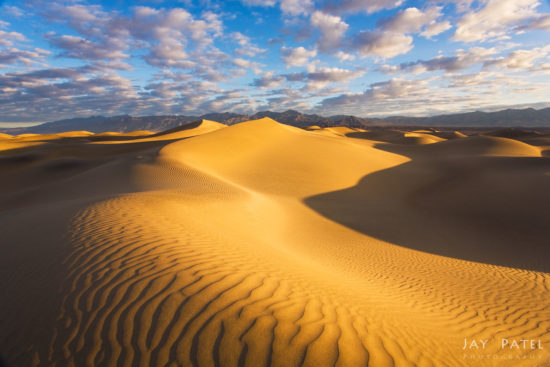
Accentuating foreground patterns with a wide angle lens in Mesquite Dunes, Death Valley National Park, California (CA), USA
For example, if you have a foreground with a linear direction, you should frame your shot so that the line or lines lead you into the composition naturally. If you go against that linear flow, your viewer becomes confused and tends to get lost while exploring your compositions. So, if you have vertical lines, compose them in a vertical photograph. Vice versa, horizontal lines look great with a classic landscape composition.
Use Leading Lines
You also want to be aware of where you are taking your viewer with your wide angle lens selection. Yes, you use the lines, but are they leading you to the subject or the main idea of the image? If the answer is no, it’s possible that you actually forced a foreground into the composition just for the sake of having something large in the foreground. Always work with the flow of your composition and gently lead your viewer into the frame.
Now that we have a stronger foreground and our subject is primarily featured within the frame, what do you do with that background? While the wide angle lens distorts the edges, also be aware of additional distortion which occurs in the center of the frame. Mountains, for example, are huge, majestic features in landscapes. You want to highlight their amazing presence. However, if you have ever placed mountains in the middle of a wide angle shot, you have probably noticed how small they look.
To use your wide-angle lens the right way, tilt the lens at a downward angle more. This will do two things.
- Your backgrounds will drift into the distortion zone of a wide angle lens and will be stretched to appear larger than they would if they were closer to the center of the frame. If we use our mountain example from earlier, you will achieve your goal of making them appear grand as you intended.
- By tilting your lens down, you will be able to fit more of your foreground into the frame and achieve a much more dramatic warped anchor to hold your photograph down. You’ll be able to accentuate more elements, lines, and patterns into your images.
There is one pitfall with this technique that you should be aware of. If you have vertical elements in your frame this will introduce perspective distortion where your vertical elements will appear to diverge towards the top. So, if you have tree or waterfalls in your image, a wide angle lens tilted downwards will make them appear to defy gravity. This may more of a problem for some image than others. Keep this is mind when you are using this technique by pointing the camera down to use the distortion zone of wide angle lens to your advantage.

Perspective distortion introduced by pointing a wide angle lens down, Glacier National Park, Montana
Using this technique will allow you to unleash the power of a wide angle lens and will give you much more dramatic images. Just remember to be on high alert at the edges of your photograph for any unwanted toes that creep into the foreground. Wide angle lenses tend to capture more than you bargain for when tilted down. I am speaking from experience.

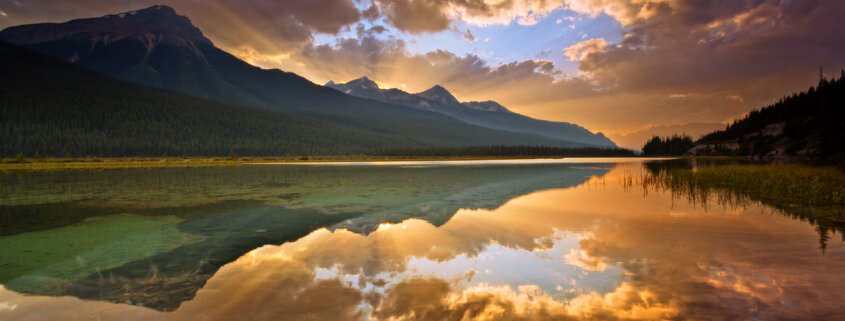


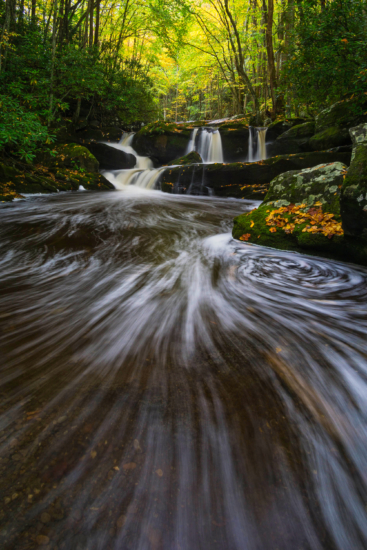
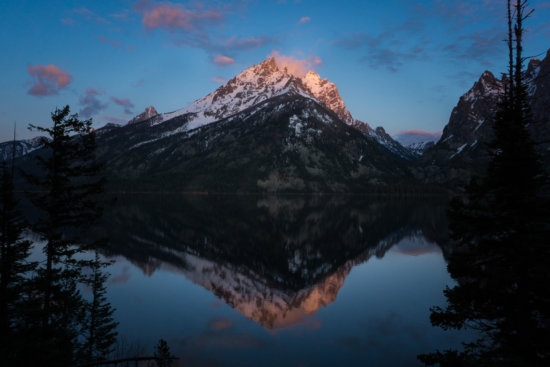
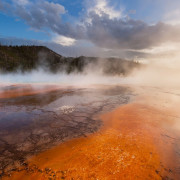




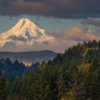
A great tip often not mentioned by others. Thanks Dave